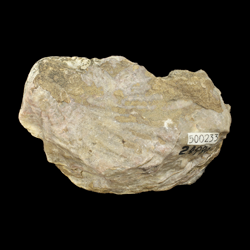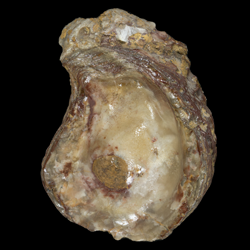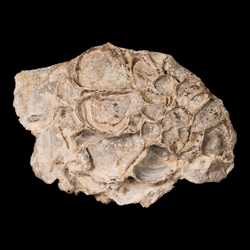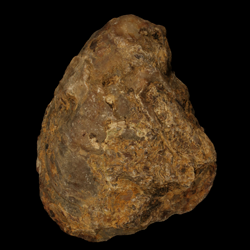
Gryphaeidae
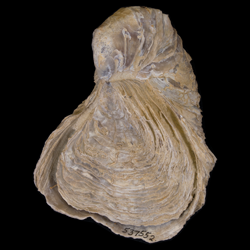
- Phylum: Mollusca
- Class: Bivalvia
- Order: Ostreida
- Family: Gryphaeidae
Overview
Gryphaeidae Vialov, 1936
Common Name: Foam oysters or honeycomb oysters
Extant/Extinct
Key morphological features: The shells are usually inequivalve and thin-walled or solid, with a circular or oval shape. The shell is composed of aragonite and calcite, and exterior sculpture is ribbed, often with scales or spines.
SIZE: Up to ~300mm
Paleoecology: The Gryphaeidae live in marine and estuarine environments and cement themselves to hard substrates. Their exterior surfaces are often encrusted or bored by other species. They are found in tropical and subtropical seas.
MOBILITY: Stationary
FEEDING MODE: Suspension Feeder
HABITAT: Epifaunal
Sources:
Mikkelsen, P.M., and Bieler, R. 2008. Seashells of Southern Florida: Bivalves. Princeton, New Jersey: Princeton University Press. 503 pp.
Cox, L.R., et al. 1969. Systematic Descriptions, in Cox et al., eds., Treatise on Invertebrate Paleontology, Part N, Mollusca 6, Volume 1. The University of Kansas and Geological Society of America. 489 pp.
